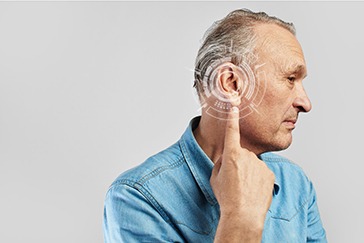 Book Appt.
Book Appt.
 Call Now
Call Now


Cholesteatomas are abnormal, non-cancerous growths or cysts that develop in the middle ear or behind the eardrum. These growths can cause a range of ear-related problems and can potentially lead to serious complications if left untreated.
Causes of Cholesteatomas
Cholesteatomas are typically caused by repeated ear infections or other forms of trauma or damage to the eardrum. The primary causes include:
Symptoms of Cholesteatomas
Cholesteatomas may not always present noticeable symptoms in their early stages. However, as they grow or become infected, they can cause a variety of symptoms, including:
Diagnosis
Diagnosing cholesteatomas requires a comprehensive evaluation by an ear, nose, and throat (ENT) specialist. Diagnostic methods may include:
Treatment Options
The treatment of cholesteatomas typically involves surgical removal, but the specific approach depends on factors such as the size of the growth, its location, and the patient's overall health. Treatment options include:
Prognosis
The prognosis for cholesteatomas is generally favorable when detected and treated promptly. Surgical removal can prevent the growth from causing further damage to the ear's delicate structures and preserve hearing function. However, if left untreated, cholesteatomas can lead to severe complications, including hearing loss, infection, and damage to the facial nerve or inner ear.
Complications
Untreated or recurrent cholesteatomas can result in serious complications, including:
Outlook
Cholesteatomas are abnormal growths or cysts that can develop in the middle ear or behind the eardrum. Prompt diagnosis and surgical removal are essential to prevent complications and preserve hearing function. Individuals experiencing symptoms such as ear pain, hearing loss, or ear drainage should seek medical evaluation by an ENT specialist to determine if cholesteatomas are present and to initiate appropriate treatment. Early intervention can significantly improve the prognosis and quality of life for those affected by this condition.
SHALBY Sanar International Hospitals provides extensive medical procedures backed up with our state-of-the-art technology and a team of highly qualified & experienced clinical experts.

Patient from Zimbabwe Treated by Dr. (Prof) Amit Kumar Sharma | SHALBY Sanar International Hospitals

Sudan’s Yiel Hoal Wei Regains Hearing with BAHA Surgery | Dr. Amit Kumar Sharma
Our doctors pen down their research findings and experiences from time to time. Their words provide deep insight into the latest techniques, technologies and other advancements in healthcare. It provides expert answers to all kinds of health questions for real-life issues.
VIEW ALL




Since the day of its foundation, SHALBY Sanar International Hospitals is committed to provide comprehensive healthcare services. It regularly organizes awareness programs in its premises and encourages outdoor healthcare activities and camps with an intent to put focus on preventive healthcare.
VIEW ALL